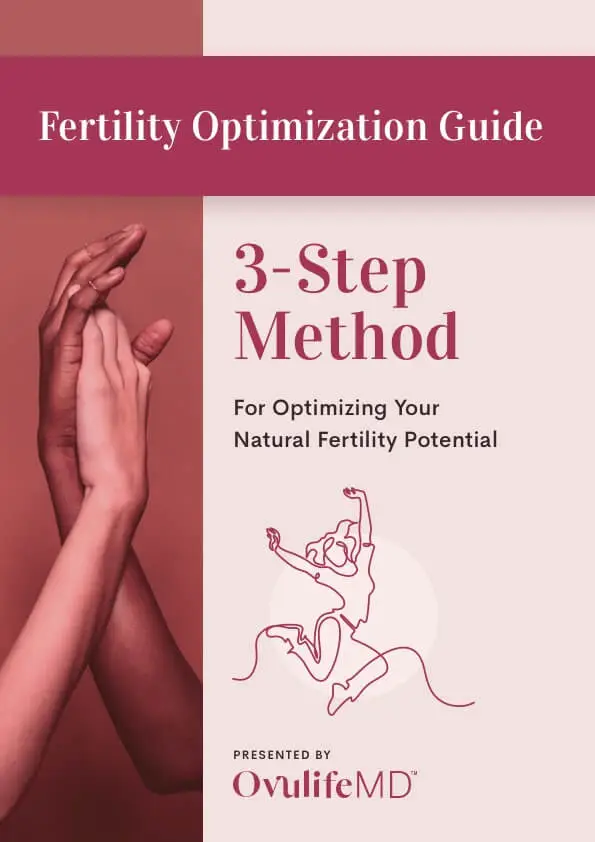
More and more women are turning towards fertility yoga as a means to reduce the effects of prolonged stress while trying to conceive. There is no denying that dealing with infertility, fertility treatment, and trying to get pregnant is stressful and can impact mental, emotional, and physical health. Yoga, when practiced with reproductive health in mind, can help on all of these levels.
Fertility doctors are also beginning to recommend yoga to their patients, especially women, as more supporting research linking yoga and fertility has emerged, and they see positive changes in their patients.
In 2018, a major literature review of 87 studies showed that yoga could provide stress management for patients with infertility, as well as have beneficial effects on fertility. They concluded that yoga could help couples overcome infertility and increase ART success rates by improving physiological states (1).
But, It’s not just as simple as saying, ‘go do some yoga’. Research specifically supports fertility-focused yoga and yoga poses that promote relaxation. Not all styles of yoga are recommended when your goal is getting pregnant, and there are some styles of physical yoga you may want to avoid completely.
We’ll break it all down for you here!
Here’s a quick overview of what you’ll discover:
What types of yoga to embrace for fertility, and what to avoid
From a yogic standpoint – hot yoga and power yoga are not encouraged when doing fertility treatment and for those who have been trying to get pregnant for a while with no success.
This is not to say that hot yoga is necessarily ‘harmful’ to your fertility, but specifically, this recommendation is based on an energetic (pranic) perspective and the cultivation of nourishing ‘soma’ energy, which is, in yoga, what supports reproduction and healthy pregnancy.
In general, this is why the softer sides of yoga are recommended when you’re trying to conceive.
Fertility yoga specifically is your first best option, but restorative yoga, somatic yoga, and slow flow yoga are all considered supportive types of yoga while TTC.
Hot yoga, power yoga, and other forms of hybrid fitness yoga, while in general, can support health and wellness, can actually deplete the energetic system as it emphasizes Agni (fire) instead of Soma (nectar). As a result, vital energy (prana) leaves the body as heat, sweat, and breath. This vital energy is needed to support reproductive health.
This Eastern perspective of energy and the subtle body is intricately woven into all aspects of yoga – including physical yoga. The energetic influence can not be separated from your yoga practice. The concept of energetic systems has not been heavily researched from a western medical view. However, this does not mean that it is not valid – as yoga is an Eastern tradition and science that has been studied for thousands of years.
In addition, yoga classes designed to be a workout are not concerned about your reproductive system; they are concerned about giving you a good workout! Classes are not targeting beneficial movement and appropriate & safe poses for certain times of your cycle. And this is why fertility yoga is the practice of choice when you are trying to get pregnant.
Please note that if you do practice hot yoga, you may want to skip it if you think you may be pregnant or after a transfer, as an increased core body temperature in early pregnancy has been linked to neural tube defects.
Specific elements of yoga for fertility
Fertility yoga, on the other hand, focuses on replenishing, nourishing, and balancing an already exhausted and depleted mind, body, and soul.
- Time spent in restorative yoga poses to regulate the nervous system & balance stress hormones is one of the main tenets of fertility yoga.
Restorative yoga uses plenty of blankets, pillows, and other props to fully support the joints of the body. Poses are generally held for longer periods of time and in silence. It is, for many, deeply relaxing and reduces stress.
The majority of the research on stress and fertility supports the concept that stress influences reproduction, and for women with lower levels of stress, chances of conception and a successful in vitro fertilization (IVF) cycle may be increased (2).
When the body is in a chronic stress response state, reproductive hormones can be sidelined. The cascade of stress hormones sends the body a message that now is not a good time to reproduce because the body is somehow in danger.
In evolutionary terms, the stress response exists to alert the body that it is at risk. Oxygenated blood and energy flow to the extremities to give you the power to fight or flight – and moves away from your central organs. For survival, the stress response is easily activated by things like bright lights, loud sounds, awful smells, etc.
However, in this day and age, we are no longer being chased by tigers. Yet our nervous system is still wired the same way.
Luckily the body has a complementary system whose main job is to calm the body & mind – the parasympathetic nervous system, or rest and digest system. It has been coined the relaxation response. Here, in contrast to the fight or flight response, oxygenated blood is sent toward the internal, central organs (including your uterus and ovaries) and stress hormones begin to balance.
The more time we spend on this side of our nervous system, the more our body will receive the signal that now is a good time to reproduce (because we are not being chased by that metaphorical tiger).
The relaxation response is admittedly harder to activate.
Some of the easiest ways to assist your body and mind in the relaxation response include stillness, darkness, quietness, support (as in lying down), and weight (placing weight on your pelvis or eyes, for example).
You can see how restorative yoga is the perfect fit for activating our parasympathetic nervous system! Check out this restorative pose library of poses for fertility for more examples.
- Slow flow yoga movement that is pelvic-centric brings nurturing oxygenated blood to the reproductive organs.
Moving slowly and mindfully helps to trigger the relaxation response and calm the mind. Focusing much of the movement on the pelvic area supplies, this often congested part of the body with oxygenated blood and cultivates the nurturing soma energy.
Many women, because of the nature of fertility treatment itself, find that they feel disconnected from their bodies, especially in and around the pelvic area. This slow, purposeful, and mindful practice creates a positive connection to the body – something that is so often appreciated by students.
- Psoas and pelvic floor release poses bring physical and energetic resolution to deep tension.
The Psoas muscles are often called our ‘stress muscles’ in that they are activated when we are in a stress response. These muscles connect the top of the body to the bottom of the body and are paramount for running and walking. Every time there is stress (think doctors appointments, needles, waiting, birth announcements, etc.) – the psoas contracts – a little OR a lot.
The psoas muscles eventually connect to the pelvic floor muscles and may also create tension here with chronic stress.
If you think about all the ways the pelvic floor is connected to your fertility, whether it is through having intercourse, doing a transvaginal ultrasound, or performing an egg retrieval – it is always involved.
In yoga – the pelvic floor is considered part of our root energy center, which is the home of our safety and stability and gives us the strength to withstand challenges. Releasing tension in these areas can have profound effects on physical tension, as well as mental and emotional health.
- Modified asana for different times of your cycle (menstrual or IVF)
Working with the natural flow of the body instead of working against it is so important (something that any other yoga class does not take into consideration).
-

During menstruation, energy levels are lower as the body naturally cleanses and retreats. At this time, restorative yoga practices are optimal. This time is often referred to as ‘Inner Winter.’
-

When you are post menstruation (follicular phase) and into ovulation, your natural energy is higher as transformation is happening in the follicles and uterus. We call these times inner spring and inner summer. We can match these qualities by doing more twists with a more active practice. So if you want to squeeze in a vinyasa class, this is the time to do it!
-

During the 2 week wait, or the luteal phase, we start to slow down as there may be an early pregnancy. Your practice will become slower and more mindful, and some gentle movement is recommended during this time – so a mindful, slow-flow practice is best.
Yoga is rich with teachings on how to live a life with reduced suffering and to find joy during times of hardship. Dealing with fertility can often bring up questions of why me? Or how do I get through this? Having a yoga teacher versed in the vast world of yogic teachings can provide perspective for these trying times.
Staying safe while practicing yoga while doing fertility treatments is also extremely important. A well-informed and trained fertility yoga teacher can guide and modify asana (physical postures) so that you can stay safe during your fertility treatment cycles (including stims) AND also nurture and support the stage of your cycle. For example, you can come to a fertility yoga class when you are doing stims, but you’ll want to avoid certain postures that could increase the risk of ovarian torsion.
The joy of a good fertility yoga course and teacher is that they will take care of you during your whole fertility journey – whether you are trying without intervention, taking a break from fertility treatment, or actively in the middle of an IVF cycle.
Example of an infertility focused yoga practice for an IVF frozen embryo transfer cycle
Let’s break down what a fertility-focused practice would look like if you were doing a frozen embryo transfer.

Stage 1: post menstruation and pre-transfer (Inner Spring)
A more energetic and active practice is great for this time.
Closed twists like revolved triangle, shown here, provide gentle pressure on the pelvic area. When released, there’s a boost in fresh oxygenated blood flow and energy through the pelvic organs, including the uterus.
Photo: Kerry Hinds @fertilebodyyoga

Stage 2: Transfer day and the ‘chill days’ after embryo transfer (as dictated by your doctor).
Visualizations while in a restorative pose is extremely nurturing to this time and exactly what is needed. Stonehenge, as shown here, provides a mini inversion, where the raised legs help to reduce anxiety and regulate the nervous system.
Shown here – Stonehenge – modified legs-up-the-wall pose.
Photos by Kerry Hinds @fertilebodyyoga

Stage 3 of your FET: The rest of the 2 week wait.
A slow and gentle yoga practice is wonderful – no pressure on the abdomen and no more twists. Focus is more on the upper body and very gentle movement of the pelvis (like cat/cow) and restorative yoga postures such as Semi-reclined Supta Baddha Konasana, as shown here, so the body can nourish and replenish to give energy and support to the embryo.
Photos by Kerry Hinds @fertilebodyyoga
Fertility benefits of meditation with yoga
Beyond the benefits of yoga, meditation is another realm of yogic teachings that can benefit quality of life, and mental and emotional health, as well as reduce stress.
Utilizing meditation and mindfulness to benefit your fertility is becoming more popular amongst women who are facing obstacles to family building.
In a hallmark study by Dr. Alice Domar, she and her colleagues found that the female participants who participated in a 10-week mind/body program (incorporating meditation, mindfulness practice, Yoga, and cognitive behavioral therapy) had significantly increased viable pregnancy rates with assisted reproductive technology cycles via IVF compared to those who did not participate in the mind/body group (3).
The main benefits of meditation in regards to fertility, are:
-

Reduced stress – meditation activates the parasympathetic nervous system
-

Balanced hormones – regular practice can influence hormone centers and lowers cortisol levels which is an important part of maintaining a healthy endocrine system (4)
-

Increased Compassion – for yourself and others by fostering positive inner dialogue and putting space between thoughts and the self
-

Improves quality of life – one becomes less affected by mood fluctuations and is more calm and rational when making decisions
-

Improves Sleep – Sleep is pure healing nectar for the body, mind, and soul. Studies have shown that there is a link between disrupted sleep and fertility (5).
Beginning and sticking to a meditation practice can be hard, especially when you are scared to sit with your thoughts and emotions around your fertility. Know that this is normal, and meditation is a great way to lessen the control of these fertility-related emotions and thoughts in your life.
Here are some tips to get started:
- Start small. When you begin a meditation practice – it can be as quick as 30 seconds. There is a misunderstanding that to truly meditate that you need to sit still in lotus pose for 1 hour. And this is not the case! Sit still, close your eyes, and take 10 full deep breaths. And you’re done!
- Meditate in the morning right after you wake up. This is a perfect time to meditate because you are already calm from sleep, and not much has happened to activate your thoughts and emotions yet.
- Focus on something. Breath is a wonderful place to start. What does it feel like to breathe? What moves and shifts in your physical body as you inhale and exhale? Make that the center of your focus as you calm your mind.
- Take a comfortable seat. You do not need to sit on the floor to meditate. Sitting on a chair is completely acceptable– just be sure to keep both feet on the floor to keep you grounded.
- Remember that meditation is not about clearing your mind of thoughts. The brain will think – that is its job… and you aren’t trying to create more work for your brain! The goal of meditation is to not latch onto the thoughts and have them hold your focus.
Here is a free 2 week wait meditation if you’d like a little motivation to get started.
Final Thoughts
As you can see – a fertility yoga practice is so much more than just go do some yoga to relax. It’s not only about stress management (which it is REALLY good at!) but also about boosting and nourishing the stages of your cycle.
Fertility yoga is not something that is offered in every studio, so may be hard to find. It is a very specialized practice, and most yoga teachers do not understand the intricacies of fertility treatment, nor do they take the menstrual cycle into account.
Finding a virtual studio that specializes in fertility yoga can be a wonderful and convenient way to connect with others and find informed teachers. So come join us for some great fertility classes with like-minded yogis if you’ve been curious and want to try something new for yourself!
 Kerry Hinds is the founder and director of Fertile Body Yoga, a boutique virtual yoga studio dedicated to supporting women on their journey to and through parenthood with fertility, prenatal, and postnatal yoga. She is a yoga instructor and teaches live series, and has on-demand programs for common stages of fertility treatment. Kerry has been teaching yoga for over 15 years and has lived experience with infertility, fertility treatment, and pregnancy loss which informs her teachings and offerings.
Kerry Hinds is the founder and director of Fertile Body Yoga, a boutique virtual yoga studio dedicated to supporting women on their journey to and through parenthood with fertility, prenatal, and postnatal yoga. She is a yoga instructor and teaches live series, and has on-demand programs for common stages of fertility treatment. Kerry has been teaching yoga for over 15 years and has lived experience with infertility, fertility treatment, and pregnancy loss which informs her teachings and offerings.
References:
-
Darbandi S, Darbandi M, Khorram Khorshid HR, Sadeghi MR. Yoga Can Improve Assisted Reproduction Technology Outcomes in Couples With Infertility. Altern Ther Health Med. 2018;24(4):50-55.
-
Kristin L. Rooney, Domar, AD. The relationship between stress and infertility. Dialogues in Clin Neurosci. 2018;20(1):41-47.
-
Alice D. Domar, Clapp, D, Slawsby, E., Dusek, J., et al. Impact of group psychological interventions on pregnancy rates in infertile women. Fertil Steril. 2000;73(4)805-12.
-
Turakitwanakan W, Mekseepralard C, Busarakumtragul P. Effects of mindfulness meditation on serum cortisol of medical students. J Med Assoc Thai. 2013;96:S90-5.
-
Black DS, O’Reilly GA, Olmstead R, Breen EC, Irwin MR. Mindfulness Meditation and Improvement in Sleep Quality and Daytime Impairment Among Older Adults With Sleep Disturbances: A Randomized Clinical Trial. JAMA Intern Med. 2015;175(4):494–501.
-
Kloss JD, Perlis ML, Zamzow JA, Culnan EJ, Gracia CR. Sleep, sleep disturbance, and fertility in women. Sleep Med Rev. 2015 Aug;22:78-87.
If you enjoyed this post, get more like it
Always evidence-based. Always actionable.
And just like a good doctor’s visit, your privacy is protected
Don't worry, you can always unsubscribe with just one click.Welcome to the tribe!
You’ve joined the OvulifeMD community. Don’t forget to check your inbox for a special welcome email.
Featured Content



Leave a comment
If you have any questions, we will be happy to answer them.
Thanks for sharing what's on your mind!
Check the thread for more insight and support.